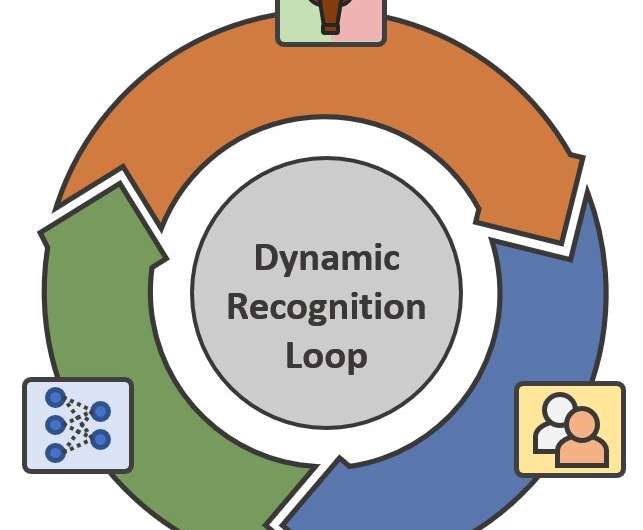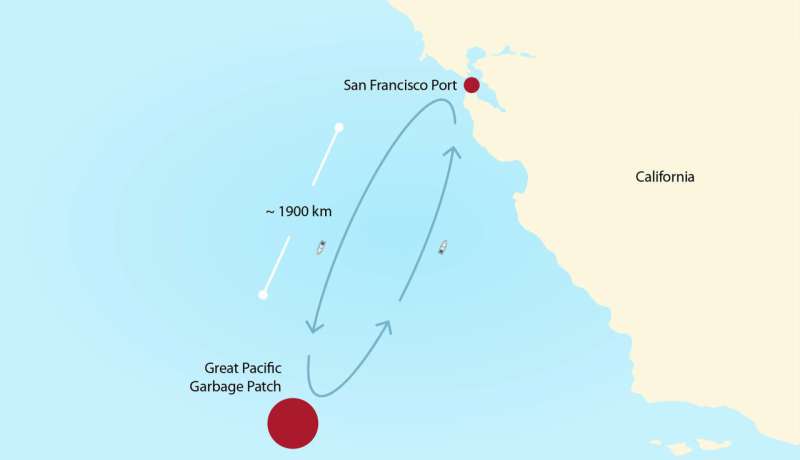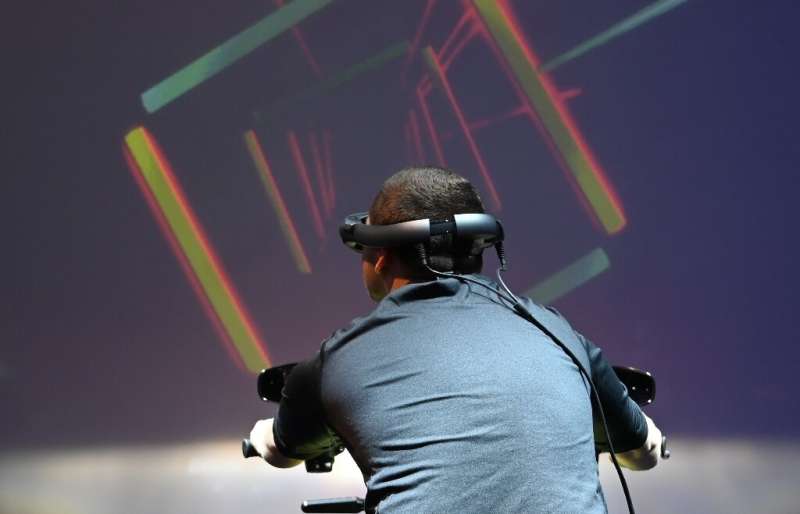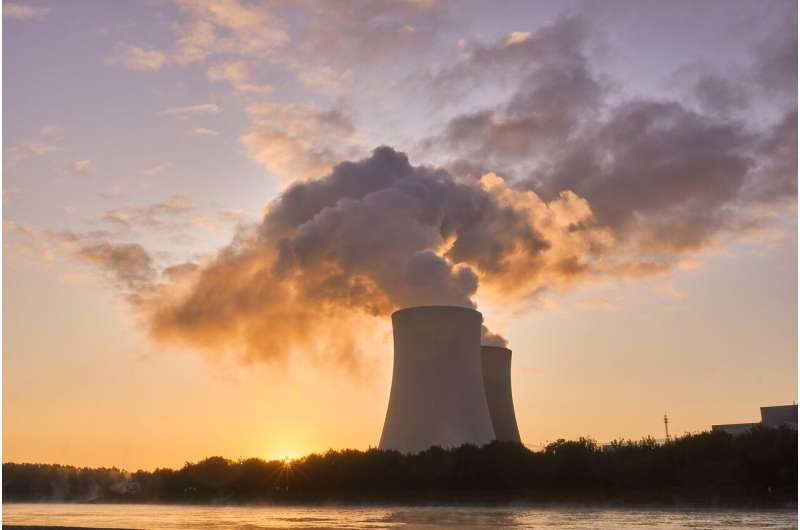Doomsday Clock now 100 seconds from midnight

While the Doomsday Clock is perilously close to midnight, it is not as close as UK Prime Minister Boris Johnson recently suggested in his COP26 opening remarks
"Humanity has long since run down the clock on climate change," Johnson said. "It's one minute to midnight on that doomsday clock and we need to act now."
The Bulletin of the Atomic Scientists is in complete agreement with the sentiment that "we need to act now," but would like to clarify that the Doomsday Clock, which it created in 1947, is currently set at 100 seconds to midnight.
The Clock, a powerful symbol for how close humanity is to self-annihilation, is set by the Bulletin's Science and Security Board once a year. The board members weigh dangers posed by climate change, nuclear risk and disruptive technologies in determining the time. The board will announce the time in January 2022 and commemorate the Clock's 75th anniversary with an upcoming book.
As one of the most recognizable symbols in the past 100 years, the Doomsday Clock sits at the crossroads of science and art. It has permeated not only the media landscape, but culture itself. The anniversary book chronicles the Doomsday Clock's references in novels by writers such as Stephen King and Piers Anthony, comic books (Watchmen, StormWatch), movies (Justice League), music (The Who, The Clash, Smashing Pumpkins) and numerous art exhibitions.
It is 100 seconds to midnight
2021 Doomsday Clock Statement
Science and Security Board
Bulletin of the Atomic Scientists
Editor, John Mecklin

It is 100 seconds to midnight
PDF / print version
Editor’s note: Founded in 1945 by Albert Einstein and University of Chicago scientists who helped develop the first atomic weapons in the Manhattan Project, the Bulletin of the Atomic Scientists created the Doomsday Clock two years later, using the imagery of apocalypse (midnight) and the contemporary idiom of nuclear explosion (countdown to zero) to convey threats to humanity and the planet. The Doomsday Clock is set every year by the Bulletin’s Science and Security Board in consultation with its Board of Sponsors, which includes 13 Nobel laureates. The Clock has become a universally recognized indicator of the world’s vulnerability to catastrophe from nuclear weapons, climate change, and disruptive technologies in other domains.
To: Leaders and citizens of the world
Re: This is your COVID wake-up call: It is 100 seconds to midnight
Date: January 27, 2021
Humanity continues to suffer as the COVID-19 pandemic spreads around the world. In 2020 alone, this novel disease killed 1.7 million people and sickened at least 70 million more. The pandemic revealed just how unprepared and unwilling countries and the international system are to handle global emergencies properly. In this time of genuine crisis, governments too often abdicated responsibility, ignored scientific advice, did not cooperate or communicate effectively, and consequently failed to protect the health and welfare of their citizens.
As a result, many hundreds of thousands of human beings died needlessly.
Though lethal on a massive scale, this particular pandemic is not an existential threat. Its consequences are grave and will be lasting. But COVID-19 will not obliterate civilization, and we expect the disease to recede eventually. Still, the pandemic serves as a historic wake-up call, a vivid illustration that national governments and international organizations are unprepared to manage nuclear weapons and climate change, which currently pose existential threats to humanity, or the other dangers—including more virulent pandemics and next-generation warfare—that could threaten civilization in the near future.
Accelerating nuclear programs in multiple countries moved the world into less stable and manageable territory last year. Development of hypersonic glide vehicles, ballistic missile defenses, and weapons-delivery systems that can flexibly use conventional or nuclear warheads may raise the probability of miscalculation in times of tension. Events like the deadly assault earlier this month on the US Capitol renewed legitimate concerns about national leaders who have sole control of the use of nuclear weapons. Nuclear nations, however, have ignored or undermined practical and available diplomatic and security tools for managing nuclear risks. By our estimation, the potential for the world to stumble into nuclear war—an ever-present danger over the last 75 years—increased in 2020. An extremely dangerous global failure to address existential threats—what we called “the new abnormal” in 2019—tightened its grip in the nuclear realm in the past year, increasing the likelihood of catastrophe.
Governments have also failed to sufficiently address climate change. A pandemic-related economic slowdown temporarily reduced the carbon dioxide emissions that cause global warming. But over the coming decade fossil fuel use needs to decline precipitously if the worst effects of climate change are to be avoided. Instead, fossil fuel development and production are projected to increase. Atmospheric greenhouse gas concentrations hit a record high in 2020, one of the two warmest years on record. The massive wildfires and catastrophic cyclones of 2020 are illustrations of the major devastation that will only increase if governments do not significantly and quickly amplify their efforts to bring greenhouse gas emissions essentially to zero.
As we noted in our last Doomsday Clock statement, the existential threats of nuclear weapons and climate change have intensified in recent years because of a threat multiplier: the continuing corruption of the information ecosphere on which democracy and public decision-making depend. Here, again, the COVID-19 pandemic is a wake-up call. False and misleading information disseminated over the internet—including misrepresentation of COVID-19’s seriousness, promotion of false cures, and politicization of low-cost protective measures such as face masks—created social chaos in many countries and led to unnecessary death. This wanton disregard for science and the large-scale embrace of conspiratorial nonsense—often driven by political figures and partisan media—undermined the ability of responsible national and global leaders to protect the security of their citizens. False conspiracy theories about a “stolen” presidential election led to rioting that resulted in the death of five people and the first hostile occupation of the US Capitol since 1814.
In 2020, online lying literally killed.
Considered by themselves, these negative events in the nuclear, climate change, and disinformation arenas might justify moving the clock closer to midnight. But amid the gloom, we see some positive developments. The election of a US president who acknowledges climate change as a profound threat and supports international cooperation and science-based policy puts the world on a better footing to address global problems. For example, the United States has already announced it is rejoining the Paris Agreement on climate change and the Biden administration has offered to extend the New START arms control agreement with Russia for five years. In the context of a post-pandemic return to relative stability, more such demonstrations of renewed interest in and respect for science and multilateral cooperation could create the basis for a safer and saner world.
Because these developments have not yet yielded substantive progress toward a safer world, they are not sufficient to move the Clock away from midnight. But they are positive and do weigh against the profound dangers of institutional decay, science denialism, aggressive nuclear postures, and disinformation campaigns discussed in our 2020 statement. The members of the Science and Security Board therefore set the Doomsday Clock at 100 seconds to midnight, the closest it has ever been to civilization-ending apocalypse and the same time we set in 2020. It is deeply unfortunate that the global response to the pandemic over the past year has explicitly validated many of the concerns we have voiced for decades.
We continue to believe that human beings can manage the dangers posed by modern technology, even in times of crisis. But if humanity is to avoid an existential catastrophe—one that would dwarf anything it has yet seen—national leaders must do a far better job of countering disinformation, heeding science, and cooperating to diminish global risks. Citizens around the world can and should organize and demand—through public protests, at ballot boxes, and in other creative ways—that their governments reorder their priorities and cooperate domestically and internationally to reduce the risk of nuclear war, climate change, and other global disasters, including pandemic disease.
We have experienced the consequences of inaction. It is time to respond.
A dark nuclear landscape, with glimmers of hope
In the past year, countries with nuclear weapons continued to spend vast sums on nuclear modernization programs, even as they allowed proven risk-reduction achievements in arms control and diplomacy to wither or die. Nuclear weapons and weapons-delivery platforms capable of carrying either nuclear or conventional warheads continued to proliferate, while destabilizing “advances” in the space and cyber realms, in hypersonic missiles, and in missile defenses continued. Governments in the United States, Russia, and other countries appear to consider nuclear weapons more-and-more usable, increasing the risks of their actual use. There continues to be an extraordinary disregard for the potential of an accidental nuclear war, even as well-documented examples of frighteningly close calls have emerged.
US and Russian nuclear modernization efforts continued to accelerate, and North Korea, China, India, and Pakistan pursued “improved” and larger nuclear forces. Some of these modernization programs are beginning to field weapons with dangerous enhancements, like Russia’s nuclear-tipped Avangard hypersonic glide vehicles, which are being installed on new SS-29 (Sarmat) missiles designed to replace 1980s-era intercontinental ballistic missiles (ICBMs). Russia continues to field battalions of intermediate-range, ground-launched, nuclear-armed missiles—missiles previously banned by the now-defunct Intermediate-range Nuclear Forces Treaty, from which the United States withdrew in 2019. China, which has historically relied on a small and constrained nuclear arsenal, is expanding its capabilities and deploying multiple, independently retargetable warheads on some of its ICBMs and will likely add more in the coming year.
In December 2018, Russia’s Strategic Rocket Forces tested the Avangard system, which included a hypersonic glide vehicle carried on a UR-100NUTTH/SS-19 missile. (Russian Defense Ministry video via russianforces.org)
The heightened interest that the United States and Russia have shown in hypersonic weapons, as demonstrated by a number of tests in 2020, is deeply worrisome. The hypersonics arms race has already led to calls for space-based interceptors to destroy them in flight. This militarization of space is dangerously destabilizing and increases the risk of escalation and accidental conflict.
Several countries are developing weapons-delivery platforms that can carry either nuclear or conventional warheads, introducing greater risks of miscalculation in a crisis or conventional conflict. Some may view this ambiguity as a deterrent to war, but it is not hard to imagine how mistaking a conventionally armed cruise missile for a nuclear-armed missile could complicate decision-making in the fog of crisis or war, potentially leading to preemptive strikes. The potential to stumble into nuclear war—ever present—has grown.
Meanwhile, developments in Northeast Asia, the Middle East, and South Asia further add to nuclear risks.
North Korea continues to develop its missile and nuclear programs. It revealed a new and larger long-range missile (Hwasong-16) in October 2020 at a military parade, but in the absence of flight testing, it’s not clear whether the new missile will add major capabilities to North Korea’s arsenal. There were no high level meetings between North Korea and the United States in 2020, leaving the future of US negotiations with North Korea in doubt.
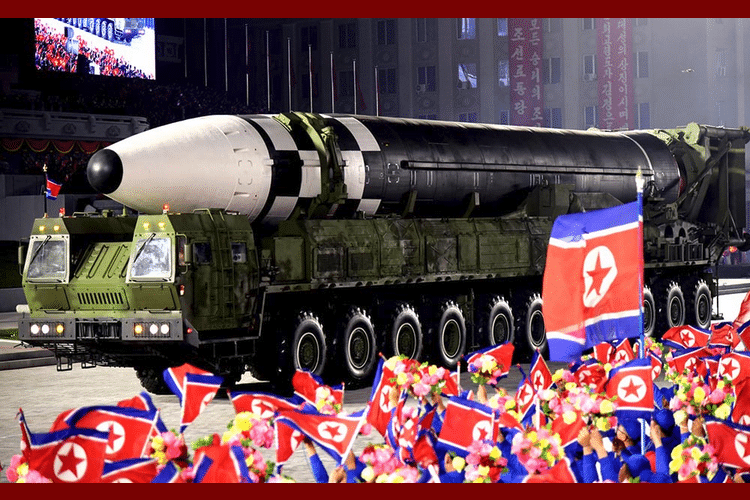
The Hwasong-16 in the parade of the 75th anniversary of the Worker’s Party of Korea in October 2020. (Photo credit: Wikimedia Commons)
South Asia remains a potential nuclear hot spot, as both India and Pakistan continue to enlarge their arsenals and increase the sophistication and ranges of their weapons, with Indian ballistic missiles now able to reach Chinese targets. The relatively recent movement of nuclear competition among these countries to sea-based platforms, including submarines, raises the risk—already high—that conventional skirmishes could escalate to the nuclear level.
The continued effort by Iran to enhance its nuclear capabilities is another serious concern. But a bright spot in an otherwise gloomy landscape is the Biden administration’s stated desire to rejoin the Iran nuclear deal, known officially as the Joint Comprehensive Plan of Action (JCPOA). In response to the 2018 US withdrawal, Iran deliberately walked back its commitments under the agreement. Stockpiles of low-enriched uranium have increased, enrichment levels have risen, and new, improved centrifuges have been installed. These actions have reduced the amount of time it would take Iran to put together a nuclear weapon from one year to several months. At the same time, Iran continues to comply with many of the agreement’s requirements, and many of the actions it has taken can easily be reversed. However, Iran’s willingness to remain in the agreement is not a given.
To keep nuclear modernization programs from becoming a full-scale nuclear arms race, it will be essential that New START, a treaty that limits US and Russian strategic weapon deployments, be extended for five more years, buying time for a follow-on agreement to be considered, negotiated, and put into force. Russian President Vladimir Putin and new US President Joe Biden agreed to do that on January 26 and now the action is in the Duma’s hands.
Other arms control efforts—including the nuclear test ban treaty and negotiations to stop producing fissile materials for weapons—have unraveled or are stalled. Previous cooperation on fissile material control and nuclear proliferation among the United States, Russia, and China has lapsed, and there are no serious efforts aimed at limiting risky developments in cyberweapons, space weapons, missile defenses, and hypersonic missiles.
The tenth review of the Non-Proliferation Treaty (NPT) was postponed in 2020 because of the COVID-19 pandemic. Rescheduled for this year, the review conference will provide an opportunity for nuclear weapons countries to demonstrate the practical steps they have taken or will commit to take to reduce the risks of nuclear weapons use and scale back their reliance on nuclear weapons.
Just a few days ago, the Treaty on the Prohibition of Nuclear Weapons entered into force after 50 countries completed ratification. This treaty was developed by countries that do not have nuclear weapons, with the intention of bringing pressure on the nuclear weapons states to move more forcefully toward nuclear disarmament. The treaty brings much-needed attention to the risks posed by nuclear weapons, especially the enormous humanitarian impacts of the use of nuclear weapons. We hope that the treaty will lead to concrete actions by all states to address the challenges of disarmament and proliferation, including collective security and verification. We call on all states to collaborate and compromise to achieve real disarmament results.
Climate change action after the pandemic
Last year was to have marked a climate change milestone: The parties to the Paris Agreement were expected to increase their pledges to reduce the greenhouse gas emissions that are disrupting Earth’s climate. The initial pledges made in 2015 to reduce emissions over this decade were markedly inadequate and meant only to begin an iterative process towards the goal of limiting global warming to well below 2 degrees Celsius, relative to pre-industrial levels. Countries had been expected to raise their pledges at the 2020 meeting, but because of the coronavirus pandemic, the meeting was postponed until this year.
The delay may help. Few countries have been paying much attention to climate action during the pandemic. In 2020, countries whose emissions amounted to barely one-quarter of the global total had submitted improved emissions pledges, and countries responsible for another quarter of global emissions—including Australia, Japan, the United States, Russia, Indonesia, Brazil and New Zealand—simply announced pledges that were effectively identical to or even weaker than their existing commitments. Although the United States formally withdrew from the Paris Agreement late last year, the new administration has begun the process of rejoining and expressed its intention to submit an improved pledge and to provide additional financial support for climate actions in poor countries. As the pandemic recedes, more countries may step up their pledges over the course of the coming year.
As the COVID-19 pandemic deepened in the early months of 2020, carbon dioxide emissions dropped by an estimated 17 percent compared to the previous year’s. Emissions have largely bounced back, however, as the world’s fossil fuel-dependent economies have begun to recover, and the year’s total emissions were estimated at only four-to-seven percent lower than last year’s. Of course, cutting emissions temporarily via disease-induced economic recession is neither desirable nor sustainable. And, as with other economic crises, further recovery will raise energy demand and thus emissions—unless we take deliberate policy steps to reduce fossil-fuel use and accelerate the adoption of alternatives.
Fortunately, renewable energy has been resilient in the turbulent pandemic energy environment. Renewable deployment has slowed, but by less than other sources, and investment remains high. In the US, coal is projected to provide less electricity than renewables for the first time ever, owing to a decline in electricity demand and coal’s inability to compete given the low price of natural gas and near-zero operating costs of renewables. Globally, demand for fossil-based power has declined, while demand for renewable power has risen.
These developments need to be sustained into the recovery from the COVID-19 crisis, but are not nearly enough to halt warming. Global greenhouse gas concentrations in the atmosphere have hit a record high, and 2020 was essentially tied with 2016 as the warmest year on record. Until global carbon dioxide emissions are reduced nearly to zero, the burden of carbon dioxide in the atmosphere will continue to mount, and the world will continue to warm. The climate is still heading in the wrong direction.
In 2020, the impacts of continuing climate change were underscored in extreme and damaging ways. Portions of North America and Australia suffered massive wildfires, and a clear signal of human-caused climate change was evident in the frequency of powerful tropical cyclones and the heavier rainfall they produced. Meanwhile, evidence mounted that sea level rise is accelerating, and the effects of the oceans growing warmer and more acidic because of carbon dioxide absorption were clear in many marine ecosystems, as was most dramatically illustrated by the ongoing destruction of coral reefs.
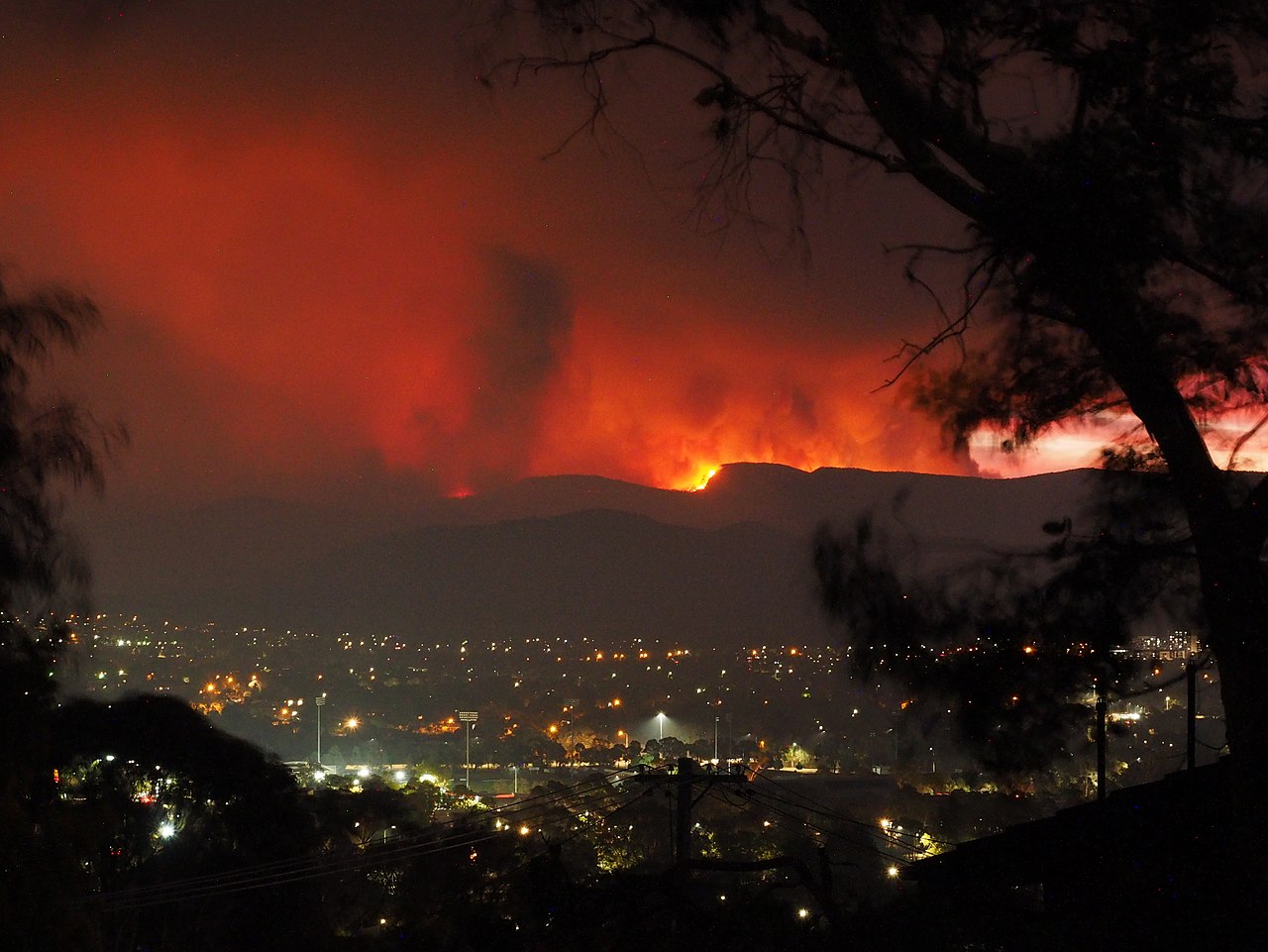
The Orroral Valley Fire viewed from Tuggeranon, a suburb of Canberra, Australia, on the evening of January 28, 2020. (Photo credit: Nick-D / Wikimedia Commons)
In the long term, the answers to two questions related to the pandemic will have important climate change ramifications:
First, to what extent will economic stimulus spending aimed at ending the coronavirus economic slowdown be directed toward efficient green infrastructure and low-carbon industries? Such support will inevitably compete with aid requests from fossil fuel companies and other carbon-intensive industries that are also facing pandemic-related pressures
In the COVID-19 case, a lot of “brown” (fossil-based) stimulus is in the works. The trillions of dollars in stimulus programs that countries have launched are not particularly green. In aggregate, the G20 countries had committed approximately $240 billion to stimulus spending that supports fossil fuel energy by the end of 2020, versus $160 billion for clean energy. Likewise, the support packages for developing countries from the World Bank and International Monetary Fund do not favor low-carbon investments. And while China has made strong commitments to the decarbonization of its domestic economy, its Belt and Road Initiative appears poised to fill the niche increasingly being abandoned by developed country finance sectors, pouring investment into fossil-fuel infrastructure around the world.
At present, national plans for fossil fuel development and production are anything but encouraging; they project global growth in carbon dioxide emissions from fossil fuel use of roughly two percent per year over this coming critical decade, whereas emissions would need to decline precipitously if the temperature commitments of the Paris Agreement were to be met. If these plans are indeed pursued, fossil fuel production in 2030 would be around 50 percent higher than is consistent with meeting even the least ambitious goals of the Paris Agreement.
A second question: How will the pandemic affect the ability of the international political system to manage global climate change? Like climate change, the COVID-19 pandemic is a global problem that calls for a global solution. How successfully the leaders of the world’s nations coordinate their responses to the pandemic affects (or, will affect) their faith and commitment to multilateralism generally. They could become more confident in the value of effective global cooperation and robust international institutions, or they could emerge more mistrustful of multilateralism and discard their remaining commitments to invest in already declining and over-stretched institutions of global cooperation. A positive experience could lead to effective collaborations addressing climate change, the threat of nuclear war, and global challenges yet to emerge.
The COVID-19 infodemic and other disruptive threats
The COVID-19 pandemic has disrupted the planet in many extraordinary and negative ways, one of which involves the internet-driven spread of false or misleading information. As the pandemic emerged, it spawned what the World Health Organization has called a “massive ‘infodemic’—an over-abundance of information … that makes it hard for people to find trustworthy sources and reliable guidance when they need it.” The COVID-19 infodemic includes deliberate attempts (sometimes by national leaders) to disseminate misinformation and disinformation that harms physical and mental health; threatens public health gains; damages economies; and makes it much more difficult for the nations of the world to stop the pandemic.
The COVID-19 pandemic and its accompanying infodemic have become intertwined with critical uncertainties regarding science, technology, and crisis communications.
First, not all of the science relevant to ending the pandemic was known at its outset. Alas, many loud voices regarded the evolution of scientific knowledge about COVID-19 as reason to ignore and disparage scientific advice about controlling the pandemic.
Also, as new science-based treatments and interventions were developed and tested, experts needed to learn how to maximize their beneficial effects and deliver them to the public. This learning process introduced uncertainty into pandemic discourse around the world.
And finally, governmental communications about COVID-19 included inconsistent and contradictory narratives emerging from political leaders and institutions that should have been cooperating and coordinating.
As these three uncertainties played out last year, the public’s response to the coronavirus emergency fractured along ideological lines, with partisanship often replacing science as the justification for public health measures. Unfortunately, the internet-fueled undercutting of rational discourse and policy making is not specific to COVID-19. Efforts to deal with the existential threats of nuclear war and climate change have been similarly undermined.
Social media, search engines, always-on mobile computing technologies, and other technology applications have exploited human cognitive propensities to be misled and enraged and to react impulsively, exacerbating political and ideological differences. Established institutions that have traditionally provided a trusted center that supports societal stability—government agencies, especially those related to public health and climate change, journalism, the judiciary, education—are under attack precisely because they have provided stability.
At the very least, the widespread dysfunction in today’s information ecosystem is a threat multiplier that vastly complicates society’s ability to address major challenges. Pandemic responses in some countries, including the United States, have provided graphic demonstrations that such concerns are not merely theoretical. Disinformation has led leaders and citizens alike to reject scientific advice about limiting the spread of COVID-19, with tragic results.
One of many “mythbuster” videos and graphics that the WHO has produced in an effort to combat pandemic mis- and disinformation: Spraying and introducing bleach into your body WON'T protect you. (Source: World Health Organization)
Unchecked internet disinformation could have even more drastic consequences in a nuclear crisis, perhaps leading to a nuclear war that ends world civilization. Disinformation efforts across communications systems are at this moment undermining responses to climate change in many countries. The need for deep thinking and careful, effective action to counter the effects of internet-enabled disinformation has never been clearer.
Meanwhile, the COVID-19 pandemic continues to rage. SARS-CoV-2 took advantage of both physiological and societal vulnerabilities and continues to nimbly skirt poorly mustered defenses. Recent mutations have created variants of the virus that are more infectious and sicken children, who were previously thought to be less prone to infection.
Scientists around the world have mobilized to create COVID-19 treatments and vaccines, and their work is showing promise in reducing the severity of and eventually suppressing the pandemic. But public officials who have dismissed the value of science during the pandemic now face populations hesitant to take COVID-19 vaccines. Those same public figures also failed to iron out the manufacturing, distribution, and other logistical details needed for efficient immunization programs.
As this pandemic subsides, leaders around the world must come together to create the institutions and surveillance regimes that can identify disease outbreaks and quash them before they become pandemics, quickly develop vaccines and therapeutics for new diseases, and rapidly promulgate preventive measures for public health.
Rapidly advancing biological research and development have produced, and will continue to produce, disruptive technologies that could increase biological risk. In the risk-increasing category are biotechnology applications that could, for example, create super-soldiers or produce biological weapons. Many countries and corporations are investing in the biological sciences as they recognize the immense opportunities to establish and grow bioeconomies. These bio-investment programs raise the new possibility that nations may conduct biological weapons research and development under the guise of building effective responses for naturally occurring pandemics.
Bad actors have surely taken notice of the gaps in national responses to the COVID-19 pandemic. Most nations were unable to meet needs for personal protective equipment, to provide enough hospital beds to treat everyone who became seriously ill with the disease, or to manage international supply chains well enough to deliver medicines and equipment when and where they were most needed. International security requires speedy action to reduce those vulnerabilities. An improved global public health effort to prevent, detect, respond to, and recover from natural pandemics would, as a salutary side-effect, better prepare the world to respond to biological accidents and attacks.
This is your wake-up call
When the world finally emerges from the worst pandemic in a century, everyone will rightly celebrate. It might be tempting to mark the COVID-19 experience as a one-off, a dismal anomaly to be forgotten. We, too, wish the world could return to normal in short order.
But the pandemic is not a unique departure from a secure reality. It is a harbinger, an unmistakable signal that much worse will come if leaders and institutions do not enact wide-ranging reforms to forestall and minimize future pandemics, to restore the primacy of science-based policies, and to reduce the possibility of nuclear war and the impacts of climate change.
We set the Doomsday Clock at 100 seconds to midnight—the closest it has ever been—because the existential risks confronting humanity today call for quick and comprehensive action across the 21st century’s complex threat spectrum. Here are some practical steps that world leaders can and should initiate in 2021 to protect humanity from major global threats that have the potential to end civilization:
The US and Russian presidents should, upon extension of New START, launch follow-on talks for more ambitious and comprehensive limits of nuclear weapons and delivery systems.
Now that the United States has announced it will rejoin the Paris climate agreement, it should accelerate its commitment to decarbonization and put policies in place that make the attainment of the commitment feasible.
Now that the United States has rejoined the World Health Organization, it should work through the WHO and other international institutions to reduce biological risks of all kinds. Also, national leaders and international organizations can prepare for biological events before they occur by more carefully monitoring animal-human interactions and improving international disease surveillance and reporting efforts; increasing world capacity to produce and quickly distribute medical supplies; and expanding hospital capacity.
US President Joe Biden can show leadership by reducing US reliance on nuclear weapons via limits on their roles, missions, and platforms, and by decreasing budgets accordingly. The United States should declare its commitment to no-first-use of nuclear weapons and persuade allies and rivals to agree that no-first-use is a step toward security and stability.
President Biden should banish the fear that a single person would have the power to end civilization by eliminating his own and future US presidents’ sole authority to launch nuclear weapons. He should work to persuade other countries with nuclear weapons to put in place similar barriers.
Russia can rejoin the NATO-Russia Council and open serious discussions on risk reduction and on avoiding escalation dangers.
North Korea can agree to codify and allow verification of its moratorium on nuclear tests and long-range missile tests.
Iran and the United States can jointly return to full compliance with the Joint Comprehensive Plan of Action, and Iran can agree to new, broader talks about Middle East security and constraints on its missile and other military activities.
The United States and Russia can renew cooperation on fissile material and nuclear security to make sure that terrorists cannot acquire the means to build a nuclear weapon.
Banks and other sources of capital can implement policies that limit investment in fossil fuel projects, as indeed some already have done, and redirect it to climate-friendly investments.
China can reorient its Belt and Road Initiative, so it sets an example for other investors by pursuing sustainable development pathways rather than supporting fossil fuel-intensive development.
All nations can commit to stronger decarbonization goals under the Paris Agreement and implement policies directed toward the realization of these goals. Those policies should address not merely long-term goals but near-term emission reductions and investments in longer-term structural changes. Meanwhile, the world’s wealthier countries should enhance their commitments under the Paris Agreement to provide financial support and technology cooperation required by developing countries to undertake strong climate action.
Leaders in governments and the private sector can emphasize COVID-recovery investments that strongly favor climate mitigation and adaptation objectives across all economic sectors and address the full range of potential greenhouse gas emission reductions. This includes capital investments in urban development, agriculture, transport, heavy industry, buildings and appliances, and electric power.
The new US administration can fill leadership positions for science-based agencies on the basis of scientific expertise and credentials; prohibit interference with the production or dissemination of executive branch scientific reports; use the best possible science to inform policy considerations; allow government scientists to engage with the public about their work; and provide funding to restore and strengthen international scientific cooperation.
National leaders and international organizations can create more effective regimes for monitoring biological research and development efforts, so potential benefits can be maximized, and possible negative consequences minimized or eliminated.
Governments, major communications technology firms, academic experts, and responsible media organizations can cooperate to find practical and ethical ways to combat internet-enabled misinformation and disinformation.
Having now killed more than two million human beings, COVID-19 is an unmistakable global wake-up call. The message is simple and chilling: Next time could be far worse. Given the pandemic experience, no one can reasonably say he or she was not warned. It remains 100 seconds to midnight, the most dangerous situation that humanity has ever faced. It is time for all to take the actions needed to—quite literally—save the world.
About the Bulletin of the Atomic Scientists
At our core, the Bulletin of the Atomic Scientists is a media organization, publishing a free-access website and a bimonthly magazine. But we are much more. The Bulletin’s website, iconic Doomsday Clock, and regular events equip the public, policymakers, and scientists with the information needed to reduce manmade threats to our existence. The Bulletin focuses on three main areas: nuclear risk, climate change, and disruptive technologies. What connects these topics is a driving belief that because humans created them, we can control them. The Bulletin is an independent, nonprofit 501 (c) (3) organization. We gather the most informed and influential voices tracking man-made threats and bring their innovative thinking to a global audience. We apply intellectual rigor to the conversation and do not shrink from alarming truths.
The Bulletin has many audiences: the general public, which will ultimately benefit or suffer from scientific breakthroughs; policymakers, whose duty is to harness those breakthroughs for good; and the scientists themselves, who produce those technological advances and thus bear a special responsibility. Our community is international, with half of our website visitors coming from outside the United States. It is also young. Half are under the age of 35.
Learn more at thebulletin.org/about-us.

